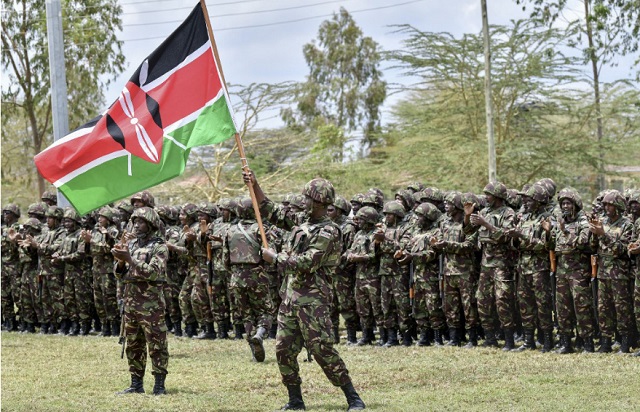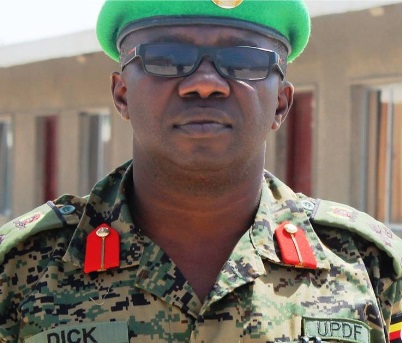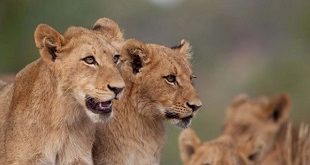
How Kenyan troops, the latest addition, shift eastern DRC puzzle
Kampala, Uagnda | IAN KATUSIIME | On Nov. 2, Kenyan President William Ruto flagged off a near 1000 troop contingent to eastern DRC on a stabilisation mission. The deployment of Kenyan troops as part of an East African regional force to root out the militants causing havoc is the latest addition in the puzzle of this part of the Great Lakes region.
Kenya deployed its military to repel M23 after the on and off militia threatened to overrun Goma, the bustling border town between Rwanda and DRC.
New in office and eager to shore up his profile, Ruto happily flagged off the Kenyan troops who are not known to fly to every regional hotspots like their Ugandan counterparts.
“We have a brotherly duty to meet DRC halfway and stand together until the job is done,” Ruto said at the flagging off ceremony.
East African Heads of State have dithered around a regional force for the large part of this year and constituting one a la peacekeeping mission in Somalia remains a tall order. The eastern part of DRC, for which the mission is intended, makes the situation no less complicated. The DRC government has repeatedly made it clear it does not want Rwandan troops in the proposed joint military force because of the latter’s alleged association with M23.
In June, East African military chiefs met in Nairobi, Kenya to deliberate on the joint force but no resolution was reached. The bickering between Kinshasa and Kigali over M23 have hindered resolutions on a way forward for the troubled eastern DRC region which is a stomping ground for militias.
Kenya joins Uganda and Burundi- countries with troops on a mission to bring peace and stability to the newest member of the East African Community. Their objective is to exterminate the militants of the Allied Democratic Forces (ADF) who have sheltered in the eastern part of Democratic Republic of Congo (DRC) for years.
Operation Shujaa anniversary
Uganda, which was the first to put boots on the ground with its much vaunted Operation Shujaa or operation of the brave, will by the end of November mark its first anniversary in the DRC jungles. It is not known anymore if the militants can still be traced in the jungles of Congo but the Uganda Peoples Defence Forces (UPDF), are still in the manhunt.
In April, President Yoweri Museveni revealed that 4,000 UPDF troops are involved in Operation Shujaa. Troops involved here are from the Mountain Division Specialised Force that has undergone training by French Special Forces in mountain warfare since 2016. In 2019, the Mountain Division was officially inaugurated.
Just this October, there were changes in Operation Shujaa’s command structure that served like an end notice until one takes a prying look. The operation’s commander Lt. Gen. Kayanja Muhanga, was redeployed away from the thickets of North Kivu in DRC to the army headquarters as UPDF Commander of Land Forces.
His predecessor, Gen. Muhoozi Kainerugaba, who touted the operation’s success in an endless stream of tweets, went back to his default posting as Senior Presidential Advisor on Special Operations. Replacing Kayanja is Maj.Gen. Dick Olum.
Olum is a previous defence attaché to Uganda’s embassy in Kinshasa, DRC’s capital. He has also commanded operations against Joseph Kony in Central African Republic where the notorious warlord is believed to be holed up. President Yoweri Museveni’s appointment of Olum to take over Shujaa therefore seemed calculated.
Like Kayanja, Olum served as UPDF Contingent commander fighting Al Shabaab militants in Somalia. He takes charge at a time the threat posed by ADF in the DRC jungles seems vanquished. Much of what has been reported in the past year is former commander Gen. Kayanja inspecting troops, touring areas where the ADF has been repelled or overseeing works where the UPDF has undertaken construction of roads under a joint agreement with DRC. This has kept the UPDF engaged on all fronts.
During the reading of Uganda’s budget on June 14, Matia Kasaija, Minister of Finance, revealed that Shs3.9 trillion ($US1bn) had been allocated for “improvement of security and security infrastructure.”
Kasaija did not specify how much would go into Operation Shujaa but the colossal amount of money he dropped during his speech encompassed the involvement of the UPDF in the road construction business in Congo. Just days after UPDF launched artillery attacks on ADF camps in the North Kivu province of DRC, the army’s engineering brigade also lunged into action with paving of roads and clearing of forests.
Uganda and DRC signed agreements for joint road construction. The roads are a 223km project and the government says it was about opening up new avenues for trade after Rwanda closed its common border with Uganda for three years.
Away from the road business, UPDF officers would never shy away from the cameras to talk about their decimation of the ADF, accused of terrorist attacks in Kampala.
“We were able to put out of action sixteen of the ADF combatants. We captured three alive and rescued three children,” Lt. Col. Gonza Kworekwa, Operation Shujaa’s Intelligence, officer told NTV in March.
Kworekwa said most of the combatants were children whom the ADF had turned into killer machines. Some of the rescued abductees could be seen milling around UPDF camps.
But the hunt against ADF has brought a lot of scrutiny to the UPDF. In June, Congo Research Group, a New York-based outfit, released a critical report saying the UPDF was likely driven by profit motive rather than a peace mission. It also queried the Ugandan army’s military gains.
“Little is known about the military progress of the operation. Although General Muhoozi Kainerugaba, Museveni’s son and commander of the Ugandan land forces, communicates often and enthusiastically about the operation on social media, neither army has provided much concrete information,” it points out.
“It does not appear that the ADF has been structurally weakened by the operation. A diplomat who follows the operations closely compared its strategy to “trying to kill a mosquito with a hammer,” an entry reads and another diplomat is said to have described the operation as “a lot of dust and noise.”

New dimesions
Such snide comments make the UPDF fight against ADF in DRC increasingly seem like a pointless forgotten war. But as Uganda’s operation marks one year, new serious dimensions are emerging.
Operation Shujaa does not constitute a membership of the much talked about joint force. It is a different operation undergirded by a bilateral agreement with DRC. But Operation Shujaa is now operating in a haven where there are other troops from Burundi, Kenya and the contentious issue of Rwanda troops foraying in the equation.
Uganda has been keenly watching another conflict brewing right in the vicinity of where its troops are stationed. When there was an M23 flare up in June, Gen. Muhoozi jumped into the fire with his tweets stirring anger as he appeared to side with Rwanda.
Adonia Ayebare, Uganda’s Permanent Representative the U.N., was not acting any different. In May, he spoke at a UN Security Council meeting where he condemned all foreign armed groups in DRC without mentioning M23. Ayebare’s omission of M23 was not by accident due to his position as President Museveni’s emissary to Kigali in the past few years when relations had broken down.
The M23 militia is raising its ugly head again sparking new tension between Rwanda and DRC and leaving Uganda in a precarious position. The latest round of fighting by M23, a Congolese militia said to be backed by Rwanda, over long held grievances with the DRC government of President Felix Tshisekedi has added to the anxiety and headache diplomats and leaders alike face in a troubled region.
The UN mission, known as MONUSCO, in a Twitter post on Nov. 1 announced its “strategic and tactical withdrawal” from Rumangabo, a military base north of Goma, North Kivu province. The withdrawal of the UN force which Congolese citizens have derided over time leaves room for other strategic players keen to join the fray.
On the political propaganda front, media reports were rife that activists in DRC were up in arms over Uganda’s tacit support of M23 demanding a break off of diplomatic relations.
Uganda pushed back on the rhetoric from Kinshasa arguing that it has done a lot for its neighbour politically and militarily. In the time of the operation, Uganda has provided logistical support to the Congolese army as the two forces jointly hunt down ADF.
Uganda was an early backer of DRC’s bid to join the EAC; a fast growing club that Somalia is also looking at. Kenya’s entry comes months after the International Crisis Group (ICG), a Brussels-based think tank based advised DRC President Tshisekedi to set rules for foreign intervention in a report it issued in May.
“The Congolese president could set rules for any foreign intervention, clarifying the objectives, duration and potentially the area of operation of those he has greenlighted, particularly that of Uganda,” it stated.
But Tshisekedi will most likely not shift from his two-faced strategy. With a presidential election coming up in December, inviting foreign troops to fight wars for their country and turning around and criticizing them might keep the 90 million Congolese citizens confused enough to give him second term in office.
****
 The Independent Uganda: You get the Truth we Pay the Price
The Independent Uganda: You get the Truth we Pay the Price



